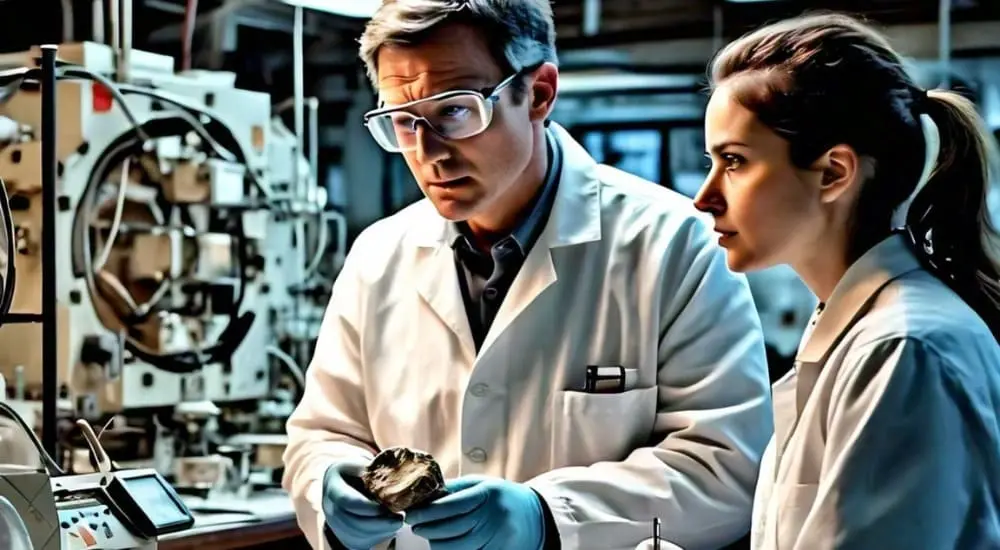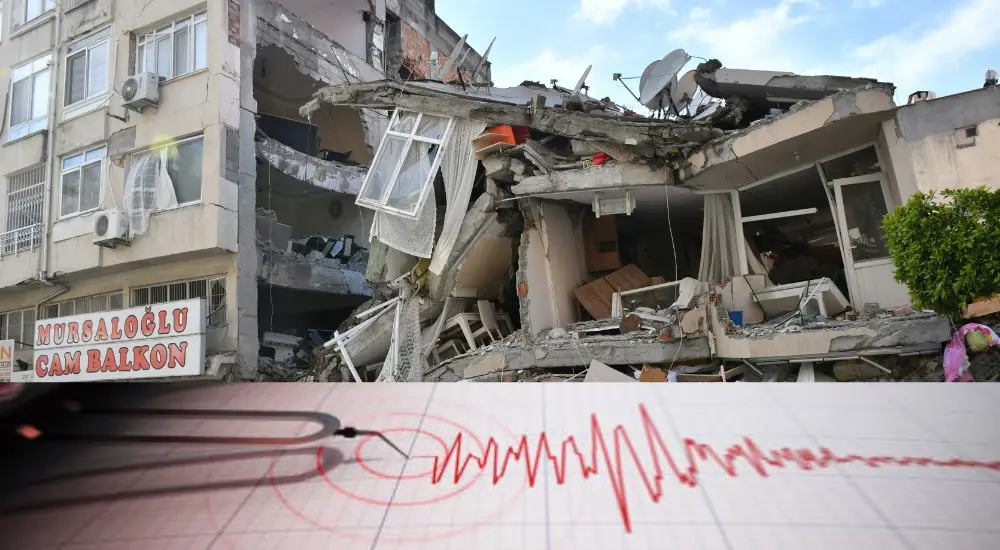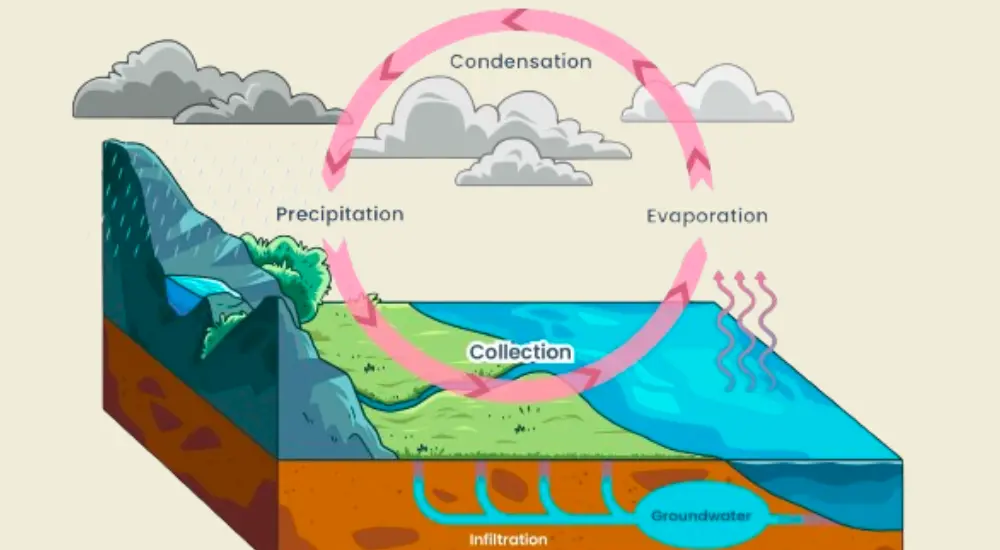Radiometric dating is a technique used to determine the age of rocks, fossils, and other materials by measuring the decay of radioactive isotopes. This method relies on the known half-lives of these isotopes, which decay at a consistent rate over time. Commonly used isotopes include Carbon-14 for dating organic remains and Uranium-238 for ancient geological formations. It is also known as radioactive dating or radioisotope dating. By analysing the ratio of parent isotopes to their decay products, scientists can calculate the age of a sample with remarkable precision. Radiometric dating has revolutionized our understanding of geological time scale, helping us understand the timeline of geological events, the age of the Earth, and the evolution of life.
1. What is radiometric dating used for?
(A) Measuring temperature changes
(B) Determining the age of rocks and fossils
(C) Calculating the depth of oceans
(D) Measuring the speed of light
(B) Determining the age of rocks and fossils
Explanation: Radiometric dating is a method used to determine the age of rocks and fossils by measuring the decay of radioactive isotopes within them.
2. Which isotope is commonly used in the radiometric dating of organic materials?
(A) Uranium-238
(B) Potassium-40
(C) Carbon-14
(D) Rubidium-87
(C) Carbon-14
Explanation: Carbon-14 is commonly used in radiometric dating to date organic materials, such as bones and wood, up to about 50,000 years old.
3. What is the half-life of Carbon-14?
(A) 5730 years
(B) 10,000 years
(C) 1 million years
(D) 100 years
(A) 5730 years
Explanation: The half-life of Carbon-14 is 5730 years, meaning it takes this amount of time for half of the Carbon-14 in a sample to decay.
4. Which radiometric dating method is used to date rocks that are billions of years old?
(A) Radiocarbon dating
(B) Uranium-lead dating
(C) Thermoluminescence dating
(D) Amino acid dating
(B) Uranium-lead dating
Explanation: Uranium-lead dating is used to date rocks that are billions of years old due to the long half-lives of uranium isotopes.
5. What is the principle behind radioisotope dating?
(A) The rate of sediment deposition
(B) The speed of chemical reactions
(C) The predictable decay of radioactive isotopes
(D) The growth rate of crystals
(C) The predictable decay of radioactive isotopes
Explanation: Radioisotope dating, or radiometric dating is based on the predictable decay of radioactive isotopes, which allows scientists to determine the age of a sample by measuring the remaining amount of the isotope and its decay products.
6. Which isotope is commonly used in Potassium-Argon dating?
(A) Argon-40
(B) Potassium-39
(C) Argon-39
(D) Potassium-40
(D) Potassium-40
Explanation: Potassium-40 is the isotope used in Potassium-Argon dating, where it decays to Argon-40, which is used to date volcanic rocks and minerals.
7. Why is it difficult to use radiocarbon dating on samples older than 50,000 years?
(A) Carbon-14 completely decays within that time
(B) Contamination from newer carbon
(C) Insufficient remaining Carbon-14
(D) Carbon-14 starts to form new elements
(C) Insufficient remaining Carbon-14
Explanation: It is difficult to use radiocarbon dating on samples older than 50,000 years because the remaining amount of Carbon-14 is too small to accurately measure.
8. What is an example of a non-radiometric dating method?
(A) Radiocarbon dating
(B) Thermoluminescence dating
(C) Uranium-lead dating
(D) Fission track dating
(B) Thermoluminescence dating
Explanation: Thermoluminescence dating is a non-radiometric method that measures the accumulated radiation dose in minerals and is used to date ceramics, sediments, and rocks.
9. What is the significance of the closure temperature in radiometric dating?
(A) It is the temperature at which a mineral starts to melt
(B) It is the temperature below which isotopes are locked in a mineral
(C) It is the temperature at which isotopes decay
(D) It is the temperature above which all isotopes are removed
(B) It is the temperature below which isotopes are locked in a mineral
Explanation: The closure temperature is the temperature below which a mineral becomes a closed system for isotopes, meaning that no isotopes can enter or leave the mineral, allowing accurate radiometric dating.
10. Which radiometric dating method is used to date recent lava flows?
(A) Uranium-lead dating
(B) Potassium-argon dating
(C) Radiocarbon dating
(D) Rubidium-strontium dating
(B) Potassium-argon dating
Explanation: Potassium-argon dating is commonly used to date recent lava flows because it can date volcanic rocks and ash deposits over a wide range of geological time scales.
11. What is the primary purpose of radiometric dating of rocks?
(A) To determine the mineral content of rocks
(B) To estimate the temperature history of rocks
(C) To determine the absolute age of rocks
(D) To identify the physical structure of rocks
(C) To determine the absolute age of rocks
Explanation: Radiometric dating of rocks is primarily used to determine their absolute age by measuring the decay of radioactive isotopes within the minerals.
12. Which radiometric dating method is often used to date ancient igneous rocks?
(A) Radiocarbon dating
(B) Potassium-argon dating
(C) Thermoluminescence dating
(D) Dendrochronology
(B) Potassium-argon dating
Explanation: Potassium-argon dating is commonly used to date ancient igneous rocks, as it measures the decay of potassium-40 to argon-40.
13. What is the parent isotope in the Uranium-Lead dating method?
(A) Lead-206
(B) Uranium-238
(C) Thorium-232
(D) Rubidium-87
(B) Uranium-238
Explanation: In the Uranium-Lead dating method, Uranium-238 is the parent isotope that decays to lead-206, which is used to date rocks that are millions to billions of years old.
14. Which mineral is commonly used in Uranium-Lead dating?
(A) Quartz
(B) Calcite
(C) Zircon
(D) Feldspar
(C) Zircon
Explanation: Zircon is commonly used in Uranium-Lead dating because it can incorporate uranium atoms into its crystal structure but excludes lead, making it an ideal candidate for this dating method.
15. How does the half-life of an isotope affect its usefulness in radiometric dating?
(A) Longer half-lives are better for dating older rocks
(B) Shorter half-lives are better for dating older rocks
(C) Half-life has no impact on dating usefulness
(D) Both long and short half-lives are equally useful for all ages
(A) Longer half-lives are better for dating older rocks
Explanation: Isotopes with longer half-lives are better for dating older rocks because they remain measurable over longer time spans, allowing for the determination of the ages of ancient rocks.















